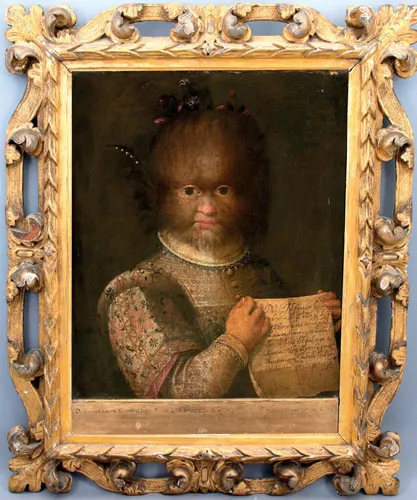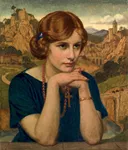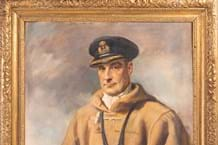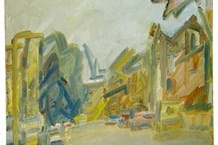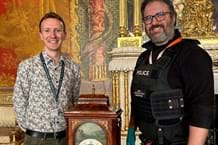The compelling image of a girl with hypertrichosis dressed in court finery was found in a collection in Yonne only a month before its sale by Rouillac in Indre-et-Loire on June 4-5.
The famous painting, hitherto known from the example in the Musée des Beaux-Arts in Blois, combines a pioneering female artist and extraordinary subject matter.
Antonietta Gonsalvus, known as Tognina, was the daughter of Petrus Gonsalvus, a carrier of the defective gene causing invasive hair growth. The condition was little understood until the 20th century and in 1547, as a boy of just 10, Petrus had been taken from his native Tenerife to the court of Henri II as a curiosity.
Initially kept as a ‘monkey’ in parkland at the Château de Fontainebleau, it was only after demonstrating great cognitive skills (he was said to have spoken Latin) that he was afforded less barbarity. His marriage in 1559 to Catherine Raffelin is thought to have nourished the tale of Beauty and the Beast.
The couple had six or seven children, four of whom inherited their father’s condition. Famous in their lifetimes, the ‘monkey people’ were a regular attraction in the courts of continental Europe.
The letter Tognina holds in her portrait recounts the family ‘journey’. It translates as: ‘Don Pietro, a wild man discovered in the Canary Islands, was transported to his serene highness Henri, king of France, and thence to His Excellency the Duke of Parma. It is from him that I, Antonietta, am descended and found today at the court of Lady Isabella Pallavicina, the honorable Marchioness of Soragna.’
Although little is known about her life (even the dates of her birth and death are unclear), Tognina’s face was depicted in quite a number of paintings and prints.
This particular likeness by Fontana is thought to have been taken c.1594 when, around 15 years old, Tognina was examined in Bologna by the natural i st Ul i s se Aldrovandi (1522-1605).
Aldrovandi’s notes on the case were later published in his Monstrorum Historia (1642). He dubbed Petrus Gonsalvus ‘the man of the woods’.
Other portraits of the family commissioned by the Swiss physicist Felix Platter (1536- 1614) for Rudolf II hang in in the Schloss Ambras in Innsbruck. The castle has given this particular form of hypertrichosis its name: Ambras syndrome.
The new discovery, measuring 22 x 19in (55 x 47cm), and in a giltwood frame, came for sale from Yonne in the Bourgogne-Franche-Comté region and by family descent from the collection of Dr Edgar Bérillon (1859-1948).
A psychiatrist known for his work on hypnosis, he published a study on ‘bearded women’ titled Étude psychologique et sociologique sur les femmes à barbe in 1905.
Attributed and authenticated with the assistance of Stéphane Pinta, a specialist from the Parisian Old Master consultant Cabinet Turquin, its late addition to Rouillac’s ‘Garden Party’ catalogue at Château d’Artigny, Montbazon created a sensation.
The contest brought together around 20 international bidders and ensured a price that was €1.55m with premium and triple the previous record for the artist.
Fontana has been described as the first female career artist in western Europe as her family relied on her income.
A popular portrait painter working in Bologna and later in Rome, her husband Gian Paolo Zappi served as her agent and studio hand and raised their 11 children.
The story of the Gonzalez family has been documented in two books: The Wild Man of Tenerife. The Miraculous Story of Pedro Gonzalez and His Children (2004) by Italian Roberto Zapperi and The Marvelous Hairy Girls: The Gonzales Sisters and their Worlds by US historian Merry Wiesner-Hanks (2009). Numerous other artists also painted Gonsalvus.


